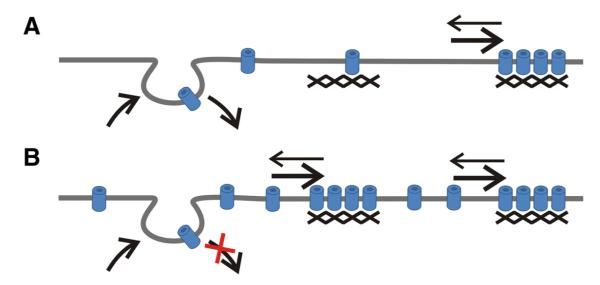Figure 8.
Model of the distribution and dynamics of CaV1.2 channels in dendrites of CNS neurons. The majority of channels are clustered in signaling complexes with a fixed number of channels lots. Outside of clusters, mobile channels are diffusely distributed. Membrane insertion and internalization causes a constant turnover of the diffuse channel population at a rate of about 1 h. Although CaV1.2s do exchange between the clustered and the diffuse state, this exchange appears to occur at much lower rates, such that basal turnover (A) does not result in a detectable exchange of clustered channels within 1 h. However, a build up of channels after blocking endocytosis (B) leads to the formation of new clusters within 30 min. Consequently, a reduction of channels—for example by increased endocytosis—is expected to first reduce the density of diffuse channels and later the dispersion of the channels clustered in CaV1.2 signaling complexes.

